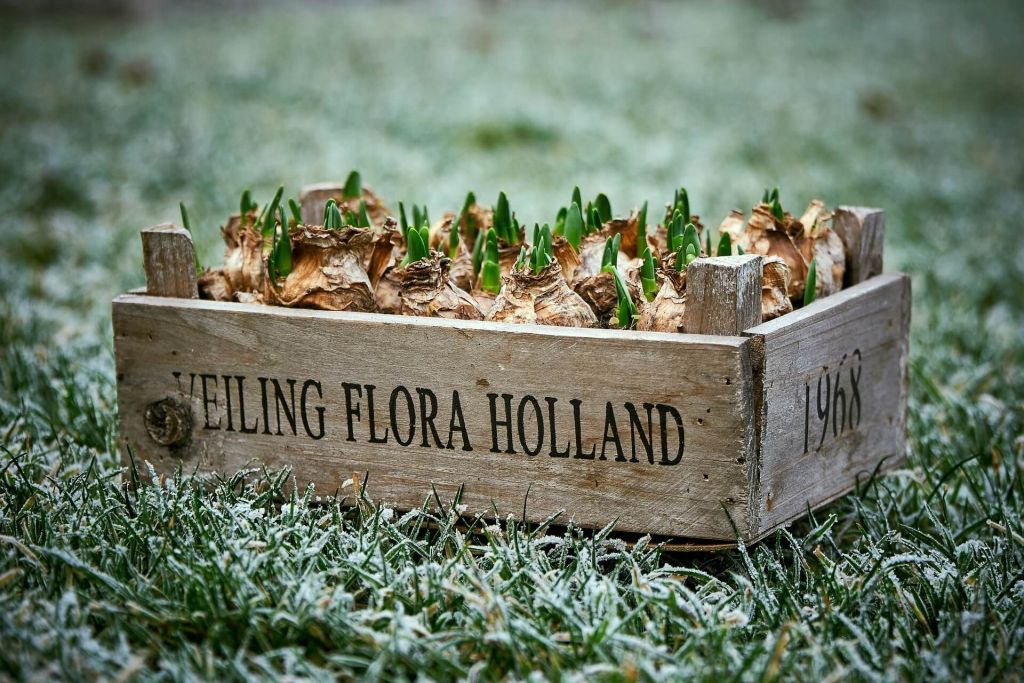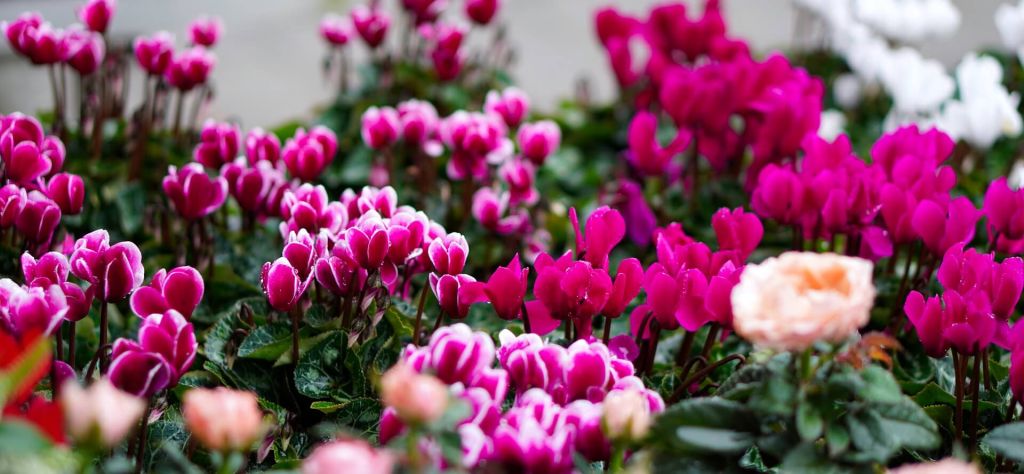
With the outdoors taking a turn for the cooler, you’d be forgiven for wanting to spend your time wrapped up inside with a hot drink - save for those occasions where there’s a firework display or bonfire parade to lure you outside, anyway. But, November days still offer plenty of opportunities to get out in the garden to complete some tasks. From getting your garden winter-ready to preparing for next spring (we know, it’s hard to imagine it right now), there’s lots to keep you occupied outdoors.
Tulip time
We might not have made it through autumn or winter yet, but that’s no reason not to start planning for spring. November is the best month to plant up your tulip bulbs - planting them as the weather cools down helps to protect them against fungal diseases which are typically killed off in the cold temperatures.
Tulips thrive in full sun, but they’ll also grow in partially shaded areas, so you have plenty of options to work with when picking a spot to plant them. Plant each bulb individually, or cluster them depending on the effect you’re looking for. Once you’ve planted them, water them well but after that you can pretty much leave them to their own devices - with wetter days ahead you shouldn’t need to keep watering them, so just look forward to March when your flowers should make a colourful appearance!
Check out our guide to bulb planting for more tips and tricks.
Rose relief
If leaves have fallen from your roses and they're showing signs of blackspot then you'll want to get rid of these before the winter. Leaves with the disease will affect your plants next year, so while spending time picking up leaves might not be your idea of gardening fun, it’s best to tackle this now to avoid issues later on.
Good Grit
Damp soil around your alpines can cause rotting at this time of year, so it's a good idea to invest in some gravel mulch to help keep the area clear. Our cockleshells make a great mulch and will help to protect the area. Shells are also thought to be a good way to keep slugs and snails at bay.
Garlic Growing
If you fancy having some home-grown garlic to keep vampires at bay next Halloween, then now's the time to plant your bulbs, along with onions and shallots too. They'll grow best in free-draining soil, so if you need to give yours a helping hand, look to add a compost with grit to aid drainage. You can also grow these vegetables in raised beds - once planted in either beds or borders, cover with fleece to protect them from frost and the colder, wetter winter weather.
Fruit Shoot
If you have apple or pear trees, then once they're dormant, you can prune them ready for next year. By doing this now, it'll encourage more fruit to grow.
If you're thinking of adding fruit trees to your garden then now is the perfect time to plant bare-root fruit trees - just make sure the ground isn't too wet.
Remember Remember
Well, there's no better time to have a bonfire than in the month where Guy Fawkes Night falls. If you have the space and obliging neighbours, then having a bonfire is a good way to clear some of your garden waste that isn't suitable for composting. Just make sure you check your pile for hibernating creatures before you set light to it.
Tread Carefully
When the lawn is hard with frost in the mornings it can make for a scenic winter wonderland you'd love to stroll through. However, as nice as getting that idyllic Instagram shot would be, spare a thought for your lawn below. Walking on frosty grass can damage it, causing the frost to rupture the grass leaf cells. Your footprints may also last long after the frost has thawed, so you could be left with lasting imprints in your lawn - not quite the picture perfect vision you had in mind!

Want a glorious spring garden, vibrant summer colours or some winter wonders? Whatever the season, bulb planting is an easy way to liven up your borders. Requiring minimal effort, this simple garden task can elevate your outdoor space and make even the most novice of gardeners feel like green-fingered wizards. Here, we take a look at what to plant and when, so that your garden is filled with flowers all year round.
The benefits of bulbs
Not only are bulbs easy to grow, they’re also quite forgiving if you happen to miss the perfect window for their planting season - as long as they haven’t rotted, you can usually get away with planting them even if they’ve started to sprout. Generally, bulbs are a fairly inexpensive way to add some interest to your garden, and the results can be very rewarding - head to many significant properties such as castles, stately homes and National Trust landmarks and you’ll find their gardens adorned with flower displays created by mixing and matching bulbs.
Many people associate bulbs with spring, but they can be planted in all seasons - that golden carpet of daffodils needs planning and planting in autumn, and if you want some festive flowers in the garden come Christmas, you’ll want to be bedding in those bulbs in the springtime. Just when you thought you might get a break from the gardening tasks, along come the bulbs to keep you busy…
Spring flowering bulbs
Daffodils, crocuses, hyacinths, bluebells and alliums are just some of the spring flowering bulbs you can plant to really bring your garden to life in the early months of the year.
Autumn is the season you’ll want to get them planted - daffodils, crocus and hyacinths are all best planted in early autumn, so aim for September, while tulips can be left a little later and are best planted in November.
Summer flowering bulbs
Begonias, freesias, dahlias, crocosmias and gladioli are bulbs to look out for if you want bursts of colour in your borders in the summer months. Some bulbs, especially if they’re hardy flowering, will be best planted in September or October, whereas the likes of gladioli can be left until early spring to be planted.
Autumn flowering bulbs
In autumn, the focus can often be on the changing colours of the trees, but that doesn’t mean you can’t add some colour to the ground, too. Cyclamen, nerines, sternbergias, autumn crocuses and colchicums will all add some floral decoration to your borders and bring with them a mix of colours to break up the reds, browns and golden hues typically associated with this season. Most autumn flowering bulbs will need to be planted by late summer to get the most of the warmth and sun.
Winter flowering bulbs
The bleak midwinter needn’t apply here - even in colder temperatures, your garden can sport pops of floral brightness. Winter cyclamen, snowdrops and aconite will all bring your garden to life in the winter months, while there are also plenty of bulbs that can be ‘forced’ in winter too if you choose to grow them indoors.
Planting your bulbs
Where, when and how to plant your bulbs does depend on the individual flower (some are much fussier than others!) but as general guidance, most bulbs can be planted in the garden in sunny areas with good drainage. If you live in an area where soil drainage is an issue, then you might want to consider giving your plants a helping hand by adding a planting mix to aid drainage.
If you’re planting in borders, group your bulbs together in multiples of around six. Aim to plant each bulb at the bottom of a hole two to three times the height of the bulb, and plant with the shoot facing upwards. In the spring and summer you’ll want to water the ground after planting, but if you’re planting in autumn then the ground is likely moist enough not to need watering.
You can also plant your bulbs into containers rather than directly in the ground, although they’ll need a little more TLC, such as adding a grit mix, and using a high potassium fertiliser to ensure they really thrive.


